Varicose veins are a common disease that develops in many adults.
According to statistics, this disease develops more often in women than in men.Such veins appear on the legs and become more common with age.
In addition, the article determines important facts about varicose veins, the corresponding photos will better understand what they look like, what it is and how they should be treated.
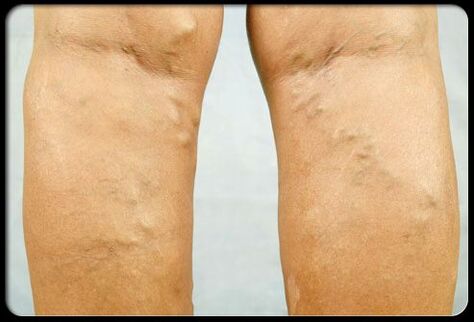
What are varicose veins?
Variant expanded veins are unusually expanded veins that most often develop on the legs.Usually have blue, purple or skin color.
They look like extended, twisted and convex blood vessels that can protrude above the skin surface.
What are veins shaped by Spider?
Aracular veins (also called telephone or vessel, vascular network) are an accumulation of tiny blood vessels that develop near the skin surface.
They often have red, blue or purple, the appearance of a network.Most vascular stars can be found on face and legs.
What leads to the development of varicose veins?
Varicose veins are caused by structural disorders in the blood vessels.
The veins carry blood from different parts of the body back to the heart.They have a number of unidirectional valves to avoid the reverse blood flow.
For a number of reasons, these valves can be damaged, which leads to the opposite blood flow in the veins.The long bloodstagnation increases the pressure in the vein and weakens the wall of the blood vessel.
Then develop spider -shaped and varicose veins due to the blood stagnation of blood and the expansion of the affected blood vessels.
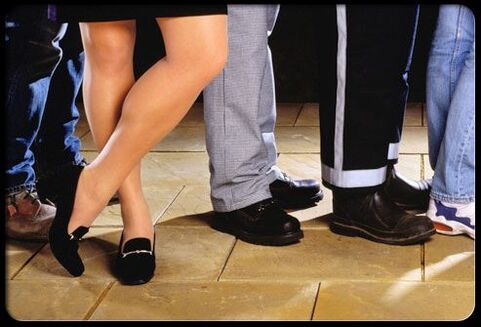
Reasons for development?
There are many different risk factors that increase human opportunities to develop varicose veins.
This includes:
- older age
- Long or sitting,
- Obesity,
- Pregnancy,
- Hormone therapy,
- Take contraceptives,
- Injuries,
- Former surgical interventions in the veins,
- Anamnesis of thrombosevens,
- Family history.
Symptoms of varicose veins
In addition to their unwanted cosmetic species, varicose veins often have no other symptoms and signs.However, some people can experience certain symptoms from varicose veins.
Symptoms can be a:
- Swelling,
- The feeling of pulsation,
- It's a dull pain,
- Combustion,
- Itching,
- Heavy,
- Tingling or cramps in the legs.
These symptoms often deteriorate or stand after long sitting or standing.Individuals can also develop brown skin color and ultimately trophic ulcers.
Complications of varicose veins
If you do not treat varicose veins, this can lead to the following:
- Develop trophic skin ulcers.These open wounds usually appear on the legs.Sometimes they can lead to the development of a soft tissue infection.
- The cloudiness of veins develop (Surface thrombophlebitis).
- Bleeding from veins are possible.
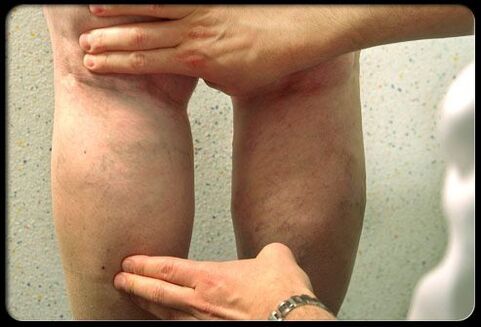
Diagnosis of the vascular network and varicose veins
You can diagnose the presence of varicose veins by examining a thorough examination of the affected area, which is usually on the legs.
The test consists of a visual inspection and palpation of a problem area.Particular attention is paid to areas with redness, swelling, changes in skin color and trophic ulcers.
Home treatment
There are various methods that can be used at home to weaken some symptoms when they occur.These conservative methods can also help prevent possible complications.
Compression stockings
Compression stockings are a simple measure for treatment at home to relieve the symptoms in the legs.
They improve blood circulation and increase the pressure in the legs.These stockings are of different types and strengths of compression.Your doctor can recommend a couple that are suitable for you.Usually sold in pharmacies.
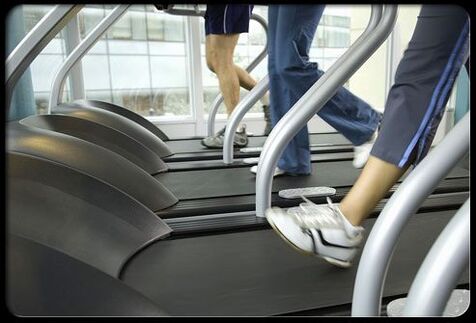
Change of lifestyle
The program of regular physical exercises and weight loss can help alleviate the symptoms of spiders and varicose veins.
Buried people should avoid having a longer stand or sitting, lifting their legs while sitting or sleeping to improve blood circulation and reduce swelling in the legs.
Sclerotherapy
Sometimes the conservative treatment of varicose veins at home may not deliver the desired results.In these cases, more specific medical procedures can be carried out, depending on the placement and size of abnormal veins.
These medical interventions are often carried out for cosmetic reasons.
Sclerotherapy is a common technology that can be carried out by a doctor.It is very effective to remove the majority of the broom veins and some varicose veins.
While this procedure, for which no anesthesia is required, the doctor introduces a liquid solution directly within the affected vein, which is to be glued and ultimately disappear.In order to achieve optimal results, several sessions may be required.Possible side effects are bruises, swelling, bleeding, infections and a change in skin color.
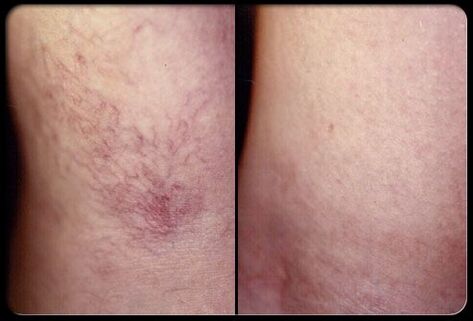
Sclerotherapy: before and after
Treatment with sclerotherapy may require several sessions, and the healing time can change depending on the person.
In principle, spider -shaped veins disappear within 3 to 6 weeks after the treatment, while varicose veins may be necessary to improve several months.
Laser treatment of varicose veins
Laser therapy is another alternative medical procedure that the doctor can also be carried out.Sometimes it is also used for sclerotherapy to maximize the results.This technique is most effective for arachnide and small varicose veins.
For patients who are afraid of needles, laser therapy gives an alternative to treatment, although the doctor can advise you which treatment method is better in their specific situation.
Laser therapy uses a focused light penalty that heats the affected blood vessel, which ultimately disappears.
Possible side effects are slight redness or tumor in the treatment area, a change in skin color, blisters and rarely scars.
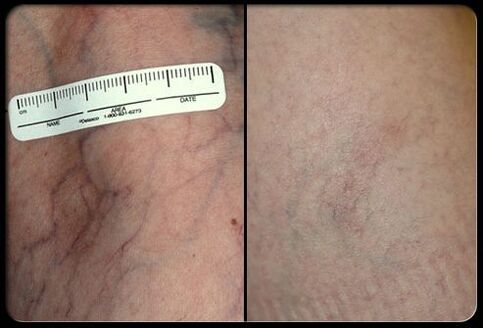
Laser therapy is a recently developed method for the treatment of varicose veins, in which the affected area is treated with light impulses of different reach.
Laser therapy: before and after the procedure
As with sclerotherapy, several laser therapy sessions are often required to achieve optimal results.The improvement can take several weeks to several months after the treatment.
Surgical intervention in veins
The company is a treatment option for more serious cases of varicose veins.Your doctor will discuss various possible surgical interventions with you to decide which treatment of varicose veins is optimal for you.One of the surgical methods is the league of the veins and their removal by small cuts on the skin.
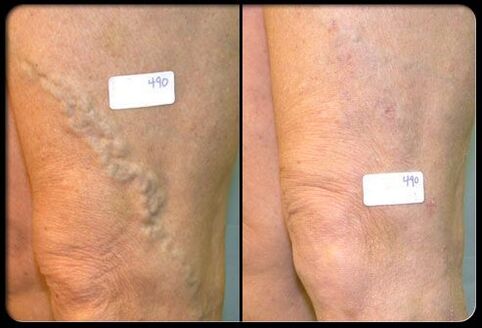
Operation in Vienna: Before and after treatment
The league and removal of Venen often successfully eliminates the symptoms and cosmetic problems of varicose veins.This operation is carried out under local, spinal or general anesthesia in the medical facility.
The full restoration of this surgical intervention usually takes about 2-4 weeks.Possible complications can include infections, bleeding, scars, nerve damage, deep venous thrombosis and undesirable reactions to anesthesia.
Intravenous laser therapy
Intravenous laser therapy is a minimally invasive surgical process, which is inserted into the laser radiation by a thin ladder by a thin conductor that is narrowed into the affected vein.
Intravenous laser therapy is characterized by 98% of the initial success.This procedure is carried out on an outpatient basis under local anesthesia or using a slight sedation.
Patients report less pronounced pain and faster recovery with intravenous laser therapy compared to the league and removal of veins.
Radio frequency
Intravenous radio frequency dilation is a minimally invasive procedure that resembles intravenous laser therapy.
Instead of using laser light, a catheter that is introduced in the vein turns the radio frequency energy, which leads to heating and narrowing of the affected vessel.
As with intravenous laser therapy, patients report less intense pain and faster recovery compared to putting on and removing veins.
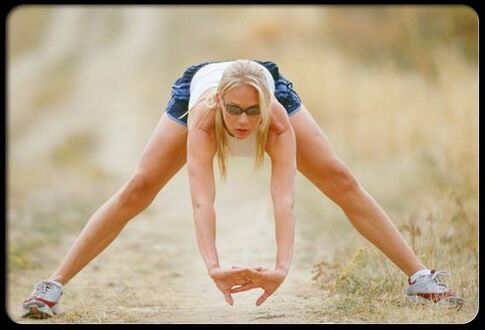
Prevention of varicose veins
Although varicose veins cannot always be prevented, you can take various methods to reduce your development opportunities.
Preventive tips include:
- Regular physical exercises;
- Maintain healthy weight;
- Avoid sitting or standing longer;
- Avoid overcoming your legs in a seated position.
- Lift your legs higher as you relax.
- Do not wear clothes that press your body in the waist, groin area and legs.
Dear friends.The article is not a medical advice and cannot serve as a replacement for a consultation with a doctor.














































